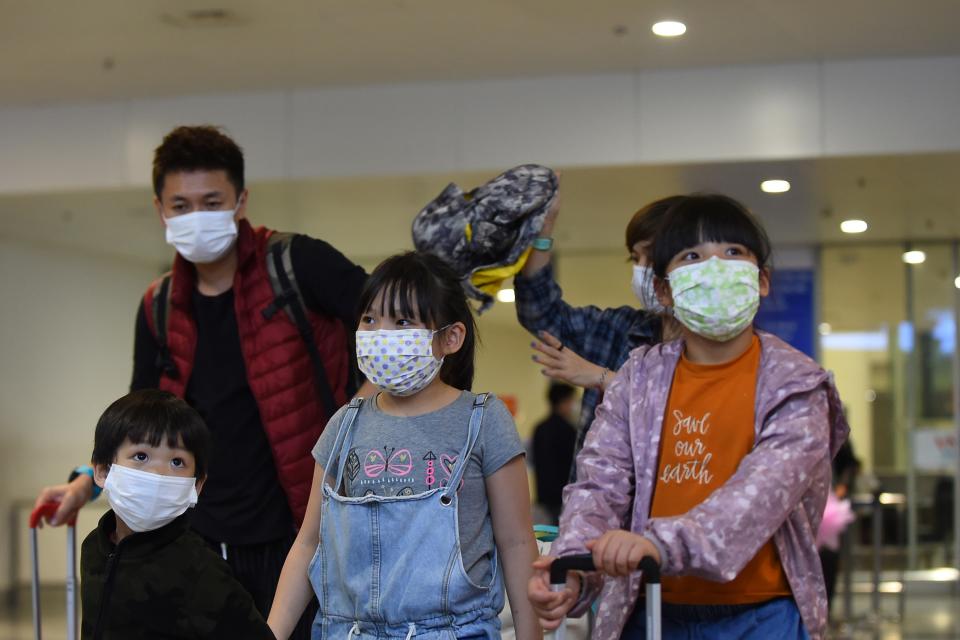Coronavirus vaccine 'will not be available until mid-2020', pharma exec warns

The race is on to develop a vaccine that wards off China’s deadly coronavirus.
Since it emerged in the city of Wuhan at the end of last year, the previously unknown strain has spread to every province of mainland China.
READ MORE: Do masks help ward off the coronavirus? And how should they be worn?
Chinese authorities have confirmed 17,485 cases in that country alone – however, experts predict as many as 75,000 may have actually battled the infection just in Wuhan.
With the official Chinese death toll reaching 361 on Monday, several pharma firms are working hard to develop a vaccine against the virus.
An exec has warned, however, that a jab will not be available before mid-2020.

“No manufacturer will be able to have a vaccine ready for the summer, or even by the autumn”, said Stephane Bancel, chief executive of Moderna Therapeutics in Massachusetts.
“The challenge is it could quickly be given to millions of people.
“The responsibility for its safety is therefore very important.”
The Moderna team’s prototype will be sent to the US National Institutes of Health for “phase I trials” as “soon as it is ready”.
These trials tend to be “small scale” to assess whether a jab is “safe in humans and what immune response it evokes”, according to the European Vaccine Initiative.
They are followed by phase II studies, which look at effectiveness against the infection, as well as safety, in greater depth.
Phase III trials involve looking at many hundreds of patients under “natural disease conditions”.
The vaccine may then be approved for use, with phase IV trials being “post-marketing surveillance”.
Coronaviruses are a class of viruses with strains that cause everything from the common cold to severe acute respiratory syndrome (Sars), which killed 774 people during its 2004 outbreak.
READ MORE: WHO declares coronavirus a 'global health emergency'
Little is known about the new strain. It is thought to have originated at a seafood and live animal market in Wuhan, capital of Hubei province.
The market likely “conducted illegal transactions of wild animals”, the BBC reported.
Like Sars, the new coronavirus is thought to have started in bats before “jumping” to humans, possibly via snakes.
“One advantage of getting a coronavirus vaccine approved is if there is a mutation to another virus later, it will be possible to have a product available quickly,” Bancel said.
Despite Bancel’s scepticism, the BBC reported that scientists started working on a jab against the coronavirus within hours of it being identified.
After being famously tight lipped about the Sars outbreak, Chinese authorities reportedly released the new strain’s genetic code “very quickly”.
This has enabled scientists to determine where it came from, better allowing them to protect against it.
Moderna is one of several pharma firms developing a vaccine against the pathogen.
Inovio Pharmaceuticals in San Diego used DNA advances to develop a jab called INO-4800, which it plans to test on humans within the next five to six months.
If successful, larger trials could be carried out in China by the end of the year, according to the company.
Its work is funded by the Coalition for Epidemic Preparedness Innovations (Cepi), created after the Ebola outbreak that killed thousands.
Cepi is also backing the University of Queensland’s efforts to create a vaccine.
Will a vaccine against the new coronavirus be ready soon enough?
No one can predict how the coronavirus outbreak will play out. For now, it shows no signs of slowing down.
Mainland China had 278 confirmed cases on 20 January, according to John Hopkins University. Just four days later, this had climbed to 916.
Cases then increased exponentially, reaching 7,700 on 29 January, 11,200 on 31 January and 17,200 on 2 February.
While incidences are also on the rise in the rest of the world, numbers are creeping up far more slowly.
On January 20, four cases were confirmed in “other locations” outside of mainland China. This rose to 25 on 24 January and 105 on 29 January.
By the end of the month, there were 153 cases outside China, rising to 183 on 2 February.
READ MORE: The chart that shows the rapid rise in China's coronavirus cases
The US Food and Drug Administration follows a similar vaccine development pipeline to the European Vaccines Initiative.
To speed things up, it can grant priority review applications and “Breakthrough Therapy” designation.
This was the case with Merck’s Ebola vaccine Ervebo, approved on 19 December last year.
The FDA “worked closely with the company and completed its evaluation of the safety and effectiveness of Ervebo in less than six months”, the body said.
Victims of the coronavirus are succumbing to pneumonia.
This is usually caused by bacteria, which tend to respond to antibiotics.
When a virus is to blame, pneumonia may be treated via “antiviral medication”, according to the American Lung Association.
The US Centers for Disease Control and Prevention has warned there is no specific treatment for coronaviruses.
Professor Peter Horby from the University of Oxford added there is “no effective antiviral” at the moment, with treatment being “supportive”.
What is the new coronavirus?
Like other coronaviruses, the new strain initially causes flu-like symptoms, such as breathlessness and fever.
Most of those who initially fell ill worked at or visited the market.
China's National Health Commission confirmed the virus can spread person-to-person, via sneezing, coughing or shaking contaminated hands.
Fatal pneumonia comes about when a respiratory infection causes the alveoli (air sacs) in the lungs to become inflamed and filled with fluid or pus, according to the American Lung Association.
The lungs then struggle to draw in air, resulting in reduced oxygen in the bloodstream.
“Without treatment the end is inevitable,” said the charity Médecins Sans Frontières.
“Deaths occurs because of asphyxiation.”

